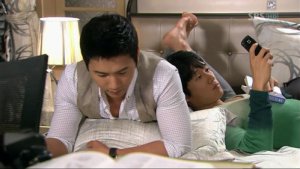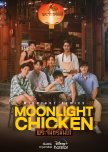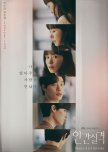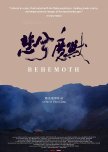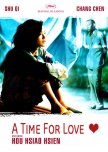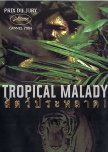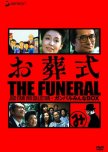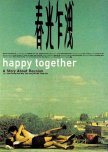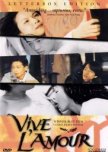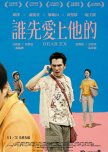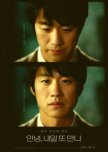Dettagli
- Ultima Connessione: 7 ore fa
- Località: ♨️
- Contribution Points: 0 LV0
- Ruoli:
- Data di Registrazione: novembre 3, 2020
- Awards Received:
 1
1
Liste Recenti

lietk12
♨️lietk12
♨️(they/them)
here for queer asian diasporic feelings. also here to not procrastinate on my phd thesis work, which I most definitely enjoy doing. profile image is of Tae-sub and Kyung-soo from Life Is Beautiful (2010), episode 41.
some annotated recommendation lists:
- my list of great queer films (note: currently most entries are more about gay characters, though I do want to watch+evaluate a broader selection of films)
- my S tier list of series with LGBTQ storytelling which stood out to me as being particularly impactful, thought-provoking, and/or risk-taking
- my A tier list of LGBTQ & BL series which were well-done and enjoyable for me
- we don't talk about the other tiers.
- my BL alignment chart, which includes all entries in my list of great queer films and my S tier list of LGBTQ/BL series (plus a few more entries, as a treat), and places them along two axes relevant to the perennial Discourse about the boundaries of BL as a genre. this chart is intended as a resource for intervening into flamewars over whether a specific work of art is/isn't BL, by calling attention to conflicting underlying assumptions about what BL should/shouldn't be. this chart also attempts to serve as a reminder that meaningful and thought-provoking art can be found in BL regardless of where its boundaries are placed.

some thematic lists:
- repair: dramas/movies which say interesting things (or may evoke complex feelings) about repairing our relationships with ourselves and/or each other
- in search of queer time & space: dramas/movies which do interesting things with time, space, and queerness
- watch while eating: dramas/movies to watch in order to think about what food means, while eating food
art-related favorites not on MyDramaList:
- feature films: Everything Everywhere All At Once, Saving Face, The Farewell, Koyaanisqatsi, Arrival, Marcel the Shell with Shoes On, 2001: A Space Odyssey (more films on my Letterboxd profile)
- tv series: Steven Universe, We Bare Bears, Killjoys
- anime: Given
- games: A Short Hike, Sable, Butterfly Soup, Journey, Gris, Humanity
- SF/F authors: Ken Liu, Kim Stanley Robinson, Isabel J. Kim, Yoon Ha Lee, Ann Leckie, Martha Wells, Zen Cho, John Scalzi, Ted Chiang, Charles Stross, Adrian Tchaikovsky
- poems: Ava Hofmann: [A woman wandered into a thicket], Chen Chen: Selections from A Small Book of Questions, after Bhanu Kapil
- Korean bands: Seventeen, Epik High, DAY6, The Rose
- art criticism: Line Rider Review's Monthly Roundup, Honglou Meng's MDL reviews
some MyDramaList comments-section screeds, if you're looking to waste your time reading high-effort earnestposts buried by the sands of time (i.e. MDL's chronological comment-display system):
- explanation of Habibi's story arc in episode 8 of Love in the Big City
- on the incessant Discourse™ about "BL" vs. "gay/queer media" (from Love in the Big City)
- on what HIV stigma, U=U, and TasP mean for moral arguments about HIV status non-disclosure; and part 2, on claims/questions about transmission risk and virologic failure in the era of U=U and modern treatment medications, with citations of published scientific literature (from Love in the Big City)
| have you heard of Scott McCloud's taxonomy of the "campfires" of art from his discussion of comics as an art form? I think it's a useful tool for understanding and appreciating different kinds of films, especially those outside the "animist" camp (which is the more familiar territory for fans of drama series). I also think identifying the ways in which drama series make choices beyond animist priorities (such as in I Told Sunset About You (2020)'s symbolism and cinematography) helps to reveal their artistic value. |  |
  | |
every day (some days) I feel my silly little feelings and work on my silly little art (youtube videos):
| 走了 (zǒule): a forestalled isekai Format: chapbook (film) Length: 01:10:00 Status: in production Countries of production: USA, TBD Year: TBD | 走了 (zǒule): a hypertext katamari Format: chapbook Length: 10 Status: draft Year: TBD |
| on the feeling of passing by the menu listing for "healthy tofu udon or soba" after-hours at sankaku sushi&noodle in sfo terminal 3 after having finished chen chen's "your emergency contact has experienced an emergency" while sitting in the row behind three kids from a chinese-american family, one of whom could've been me as a potential queer asian youth in a real or hypothetical place-time where such a phenomenon would('ve) be(en) nurtured by the world Format: poem Length: two panels (including the long-ass title) of an instagram post, but the font is kinda small so it's actually significantly longer than your garden-variety rupi kaur (not that that tells you anything actually useful) Year: 2024 |
 The Name Engraved In My Heart (刻在我心底的名字) The Name Engraved In My Heart (刻在我心底的名字)Format: narrative animation + documentary still-image film Length: 08:50 Year: 2022 |  a _____ on the _____ of _____ / profile photos (liked by 2 users) / facial recognition training set a _____ on the _____ of _____ / profile photos (liked by 2 users) / facial recognition training setFormat: non-narrative still-image film Length: 03:20 Year: 2021 |
 A Shiver Sequence A Shiver SequenceFormat: non-narrative animation Length: 03:13 Year: 2021 |  A Fleeting Life A Fleeting LifeFormat: narrative animation Length: 02:11 Year: 2021 |
annotated bibliography of some English-language academic(/-ish) critical works discussing queer representations in popular culture and mass media in local or transnational Asian contexts:
- Cheung, Elliott and Chieng, Nicholas. (2020). Reflecting on the Critical Success of Your Name Engraved Herein. No Man Is An Island. https://nomanisanis.land/your-name-conversation-part-one/
This isn't actually an academic article, but rather a discussion which takes a critical look at the historical and political context around Your Name Engraved Herein (2020). - Kim, Ungsan. (2019). Cruising the Cityscape: Queer Temporality in Contemporary East Asian Cinema. (Thesis). University of Washington. https://digital.lib.washington.edu/researchworks/handle/1773/44191
This PhD thesis situates and characterizes "new queer East Asian cinema" as an aesthetic and political movement which has emerged since the 1990s, where "queer cinema" is to be understood through directorial/artistic choices, not just through the presence of LGBT identities. Specifically, this thesis identifies new queer East Asian cinema as a mode of production through its critical social concerns against the heteronormatively normalizing power of national narratives of temporality focused on progress and development. The following examples are analyzed, with special attention to the modern history of queerness in Korean society, queer Korean cinema, and queer cinema in Korea: What Time Is It There? (2001), Goodbye, Dragon Inn (2003), Prisma (2013), Glow Job (2018), Stateless Things (2012), The Bacchus Lady (2016), The Handmaiden (2016), and Happy Together (1997). - Han, Qijun. (2019). Diasporic Chinese family drama through a transnational lens: The Wedding Banquet (1993) and Saving Face (2004). International Journal of Media & Cultural Politics, Volume 15, Number 3, 1 September 2019, pp. 323-343(21). https://www.ingentaconnect.com/content/intellect/mcp/2019/00000015/00000003/art00004
This article discusses conflict and negotiation of family culture and sexual, gender, and ethnic identities in immigrant Chinese American families in The Wedding Banquet (1993) and Saving Face (2004). - Ledru, Juliette. (2019). Queer and Asian: Redefining Chinese American Masculinity in The Wedding Banquet (Ang Lee, 1993) and Red Doors (Georgia Lee, 2006). Itinéraires. https://journals.openedition.org/itineraires/7067?lang=en
This article discusses the performance of masculinity in The Wedding Banquet (1993) and Red Doors (2005). - Schmidt, Thomas. (2019). The Depiction of Japanese Homosexuality through Masks and Mirrors. Estetyka i Krytyka, Issue 4, pp. 45-62. https://www.ceeol.com/search/article-detail?id=975819
This article discusses symbolism in Funeral Parade of Roses (1969) as it relates to that film's exploration of queerness and the construction & performance of identity. - Nguyen, Thi Huyen Linh. (2019). Reading the Youtube sitcom My best gay friends: what it means to be gay in Vietnam. Continuum: Journal of Media & Cultural Studies, 33 (5). pp. 540-553. https://www.tandfonline.com/doi/full/10.1080/10304312.2019.1634179
This article discusses My Best Gay Friends (2012), an independent Vietnamese gay webseries, and contextualizes it. - Sookkasikon, Pahole. (2018). Bangkok is burning: Queer cultural productions of Thainess in diaspora. (Thesis). University of Hawai'i at Manoa. https://scholarspace.manoa.hawaii.edu/server/api/core/bitstreams/8e5026b7-62d5-420c-892d-b13863c71d66/content
This PhD thesis contextualizes and discusses media which queers Thainess beyond nation-building and the Western gaze. Chapter 1 analyzes the horror-comedy film Pee Mak Phrakanong (2013) and its queering of gender roles and ideas of Thainess in how it departs from previous cinematic interpretations of the folkloric ghost story of Mae Nak Phra Khanong. - Chuk, T. [祝迪詩]. (2016). Queer representations in Korean media : heteronormativity, homonormativity, and queer transgression. (Thesis). University of Hong Kong, Pokfulam, Hong Kong SAR. https://hub.hku.hk/handle/10722/241413
This Master's thesis reviews the modern history of queer cinema in South Korea, then looks at normativity, assimilation and transgression in Two Weddings and a Funeral (2012), Life Is Beautiful (2010) (including an interesting discussion of the "coming out / coming home" concept for queer Asians), You're Beautiful (2009), Sungkyunkwan Scandal (2010), Coffee Prince (2007), and k-pop girl group music videos. - Glynn, Basil and Kim, Jeongmee. (2017). Life is beautiful: gay representation, moral panics, and South Korean television drama beyond Hallyu. Quarterly Review of Film and Video, 34 (4) . pp. 333-347. https://repository.mdx.ac.uk/item/86q2x
This article contextualizes and analyzes gay representation in Life Is Beautiful (2010) and the controversy around the series. - Ko, Mika. (2011). ‘Neo-documentarism’ in Funeral Parade of Roses: the new realism of Matsumoto Toshio. Screen, Volume 52, Issue 3, Autumn 2011, pp. 376-390. https://academic.oup.com/screen/article/52/3/376/1687771
This article provides historical and filmmaking-theory context for Funeral Parade of Roses (1969)'s representation of gender and sexuality. - Chiang, Mark. (1998). Coming out into the global system: Postmodern patriarchies and transnational sexualities in The Wedding Banquet. Q&A: Queer in Asian America. https://www.google.com/books/edition/Q_A_Queer_And_Asian/k0A5ArMXamYC?hl=en&gbpv=1&pg=PA374
This article critiques issues and power structures erased in The Wedding Banquet (1993).
Statistiche
101d 7h 39m
7d 6h 39m
Lista degli Aggiornamenti
-
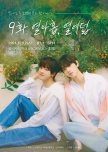 Ho Intenzione di Guardare5 giorni fa
Ho Intenzione di Guardare5 giorni fa -
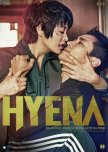 Completo7 giorni fa
Completo7 giorni fa -
 Ho Intenzione di Guardare12 giorni fa
Ho Intenzione di Guardare12 giorni fa -
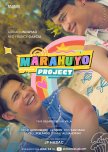 Ho Intenzione di Guardare17 giorni fa
Ho Intenzione di Guardare17 giorni fa -
 Completo19 giorni fa
Completo19 giorni fa -
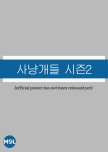 Ho Intenzione di Guardare19 giorni fa
Ho Intenzione di Guardare19 giorni fa -
 Ho Intenzione di Guardare22 giorni fa
Ho Intenzione di Guardare22 giorni fa -
 Ho Intenzione di Guardare23 giorni fa
Ho Intenzione di Guardare23 giorni fa -
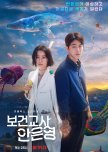 Ho Intenzione di Guardare23 giorni fa
Ho Intenzione di Guardare23 giorni fa

